Features to consider while choosing a noise gate pedal
 Just like any piece of gear, the features on a noise gate pedal will vary from one to another. So, when you are shopping for a new pedal, there are some features that you should consider, including:
Just like any piece of gear, the features on a noise gate pedal will vary from one to another. So, when you are shopping for a new pedal, there are some features that you should consider, including:
Interface
The interface on each noise gate pedal is different, but there are likely to be some common features that will help you to choose the right pedal for your set up. It is a good idea to look for an interface that features threshold and decay controls. The threshold will require a little fine-tuning, but it will allow you to kick the pedal in to cancel noise as you need it. This knob sets the sensitivity of the noise suppression. If you set the threshold to maximum, it will cut almost anything including your guitar signal. Backing it off a little will allow you to get some nice feedback swells.
Decay determines the speed that the noise gate is triggered and the selected threshold is reached. A fast decay can create an unnatural tone, while a slow decay causes improper function that negates the pedal. With a little tweaking, you can set how slow or fast you want your signal to fade out. This will help you to eliminate longer notes being chopped off or create a choppy sound that is suited to high gain, tight rhythm playing.
The interface may also include LEDs to help you quickly see that the pedal is operating correctly when you’re on a dark stage and multiple inputs to help you tailor your effects chain to suit your unique sound. For example, the Decimator II features a link in and link out input, so that you can incorporate two Decimators into your chain. This allows you to put one noise gate pedal at the start of your chain and one in the back for the ultimate effect.
Modes
Some noise gate pedals also have increased functionality with different modes. The Rowin Noise Killer has hard and soft modes. As the name suggests, the hard mode provides hard effects of noise reduction, while soft mode offers soft effects of noise reduction. Soft noise can include anything from refrigerators to fans that can be audible in a quiet environment, whereas hard noise include hums, squeals, and other feedback sounds that can compromise your sound. The other example of noise gate pedals with different modes on our list is the Boss NS-2. This pedal features mute and reduction modes. In the reduction mode, the NS-2 suppresses unwanted noise that is determined by the Threshold level. The Mute mode mutes all sound once the pedal is activated, acting like a kill switch to provide dead silence. These modes can be easily activated: you simply select the mode and press the pedal on.
Dimensions and Weight
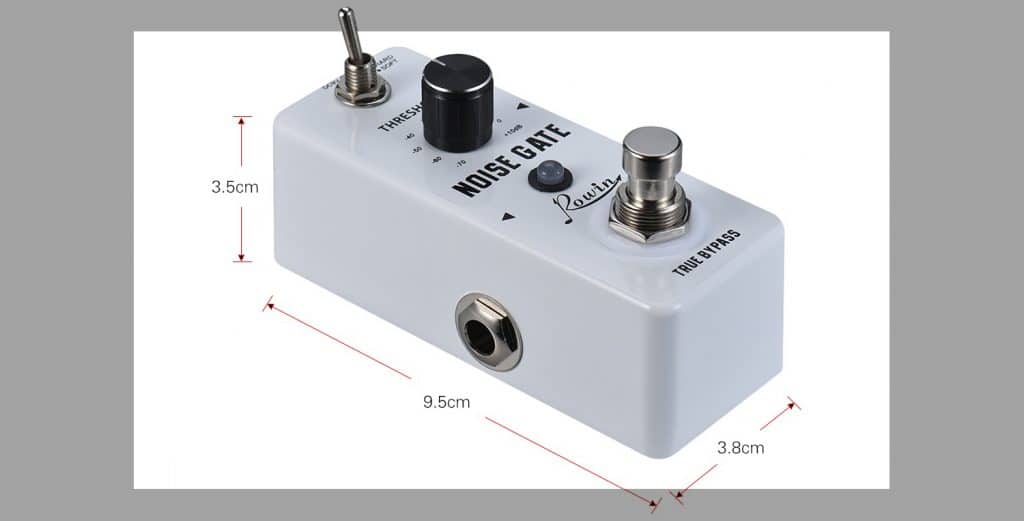 When you have an extensive setup, the space on your pedalboard can become tight, so you need to know that your noise gate pedal can slot into your set up without impacting your other effects. Many manufacturers appreciate this and design noise gate pedals with compact designs that can easily be accommodated on a pedalboard. It is worth looking at your current set up to check what space you have available and think about your future purchases so that you can keep your new pedal in your set up.
When you have an extensive setup, the space on your pedalboard can become tight, so you need to know that your noise gate pedal can slot into your set up without impacting your other effects. Many manufacturers appreciate this and design noise gate pedals with compact designs that can easily be accommodated on a pedalboard. It is worth looking at your current set up to check what space you have available and think about your future purchases so that you can keep your new pedal in your set up.
It is also important to think about the size and weight of your new pedal for easy transportation to your next gig. Gig bags can quickly become weighed down, and whether you’re using public transport or pilling into a tour bus, you need to keep your set up as streamlined as possible. Fortunately, these pedals tend to be lightweight, so they can easily be accommodated in a small gig bag pocket or even in your guitar case. However, you don’t want to go so lightweight that your pedal loses durability. This requires a compromise between weight and rugged design, so your pedal can continue to perform without weighing you down.
Price and Warranty
Creating a gig set up can be a costly process, so you may naturally look for the cheapest option to eliminate the unwanted noise from your rig. Fortunately, there are noise gate pedals to suit all budgets. Our best budget pick, the Rowin Noise Killer offers impressive performance for a very modest price tag. However, it is worth looking at the features and functionality before you rule out a more expensive model.
It is also crucial to look at the warranty offered with each pedal. Pedals tend to have a hard life and need to take a pounding, particularly if you gig regularly. You need to know that your pedal can not only cope with being stomped on but can also handle being put in your gig bag and taken to your next venue. A significant warranty showcases a brand’s confidence that its product can handle everyday wear and tear. Some of the models on our list offer extensive five- or ten-year warranties from reputable brands that make it worth spending a little more, so you can have the reassurance that your new pedal will last the distance.






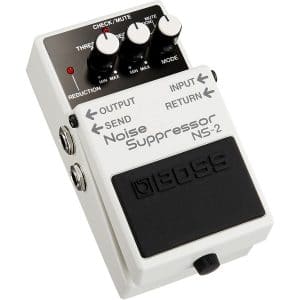
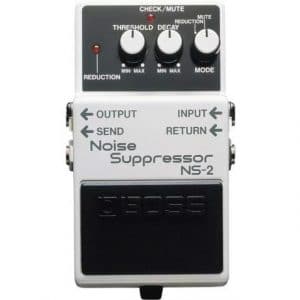
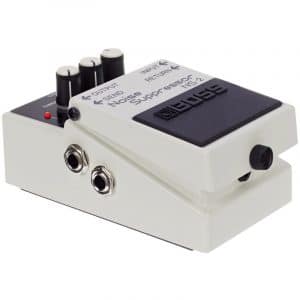
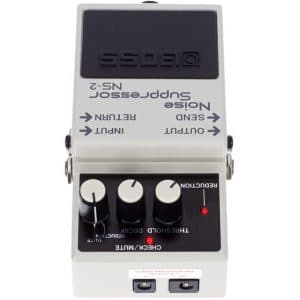
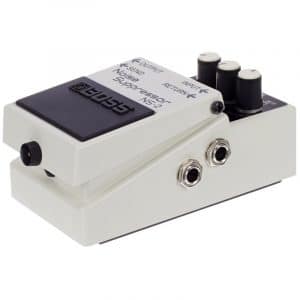
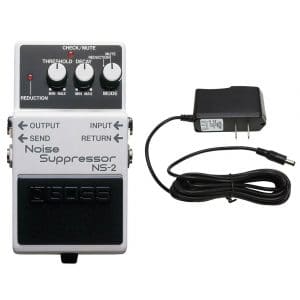
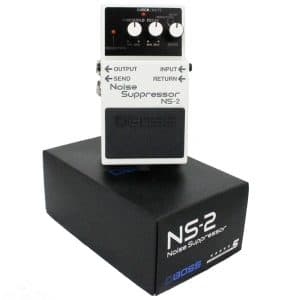




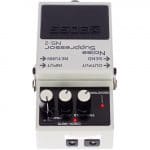
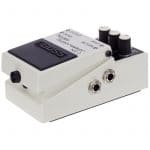
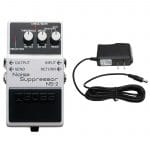
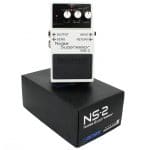
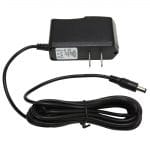
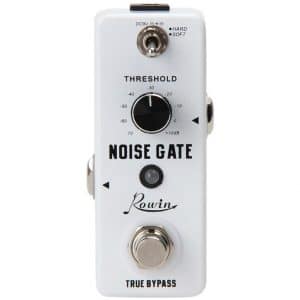
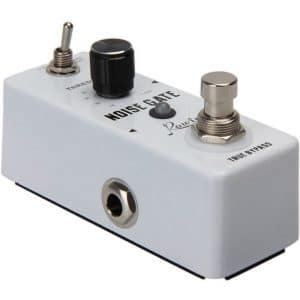
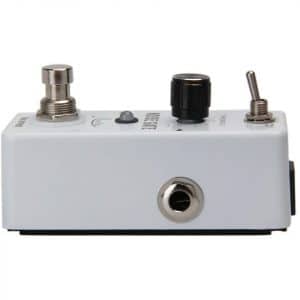
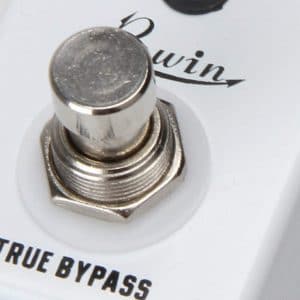
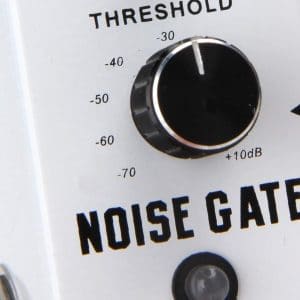
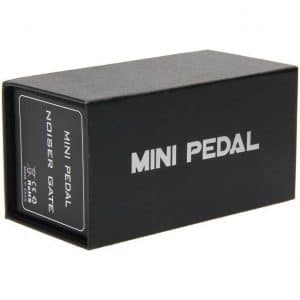
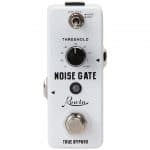
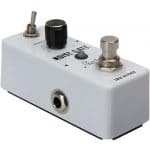
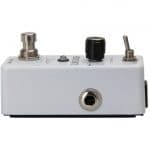
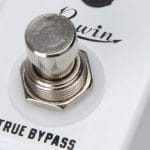
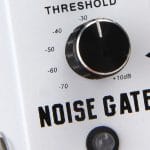
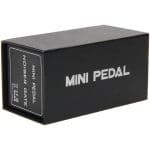
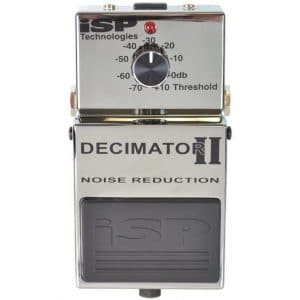
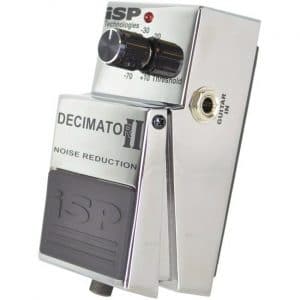
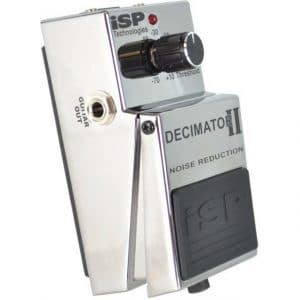
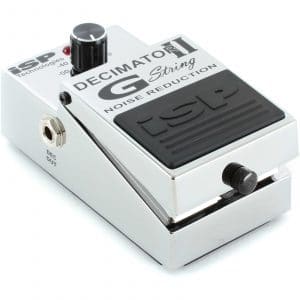
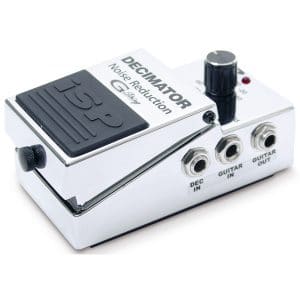
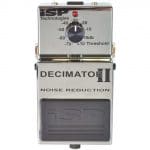
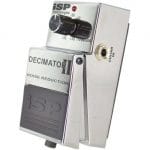
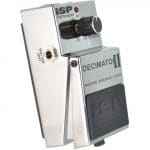
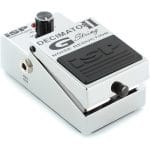
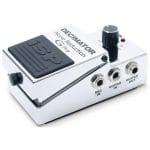
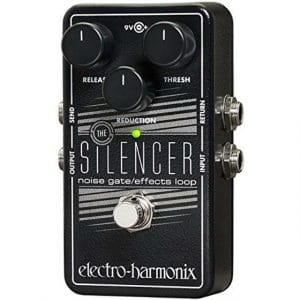
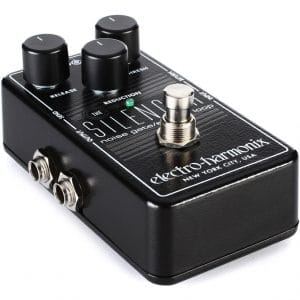
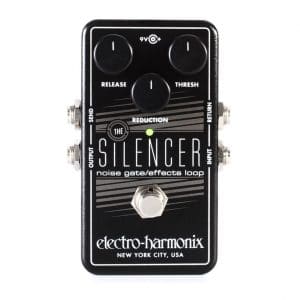
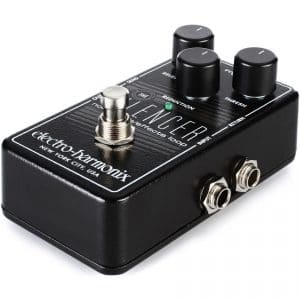
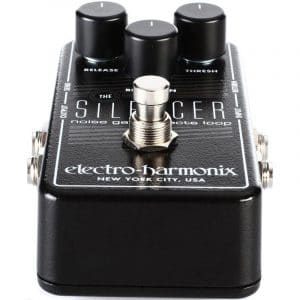
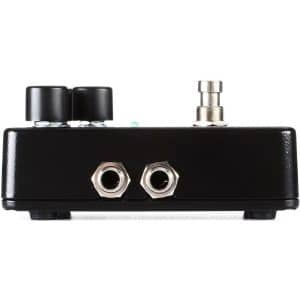
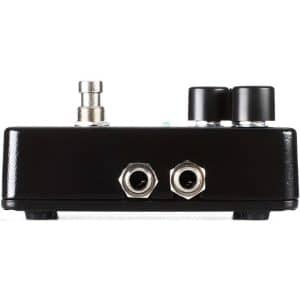
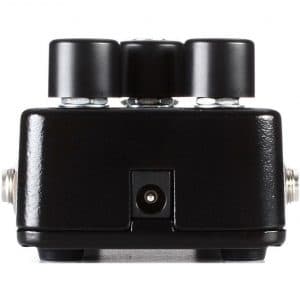
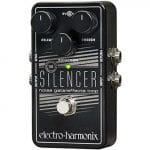
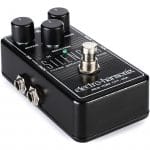
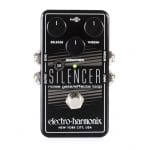
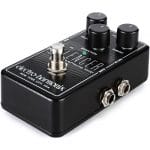
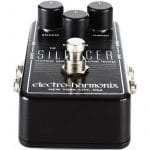
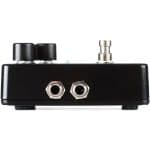

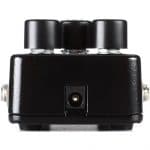

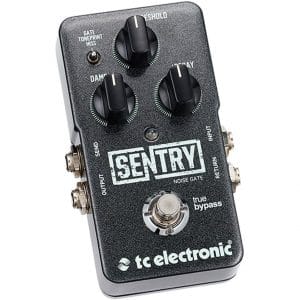
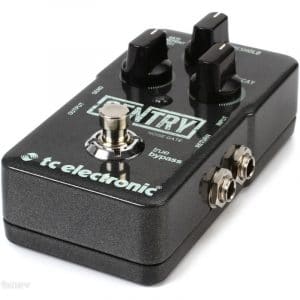
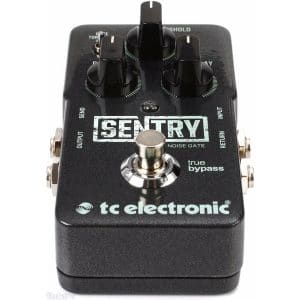
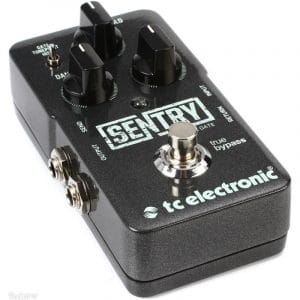
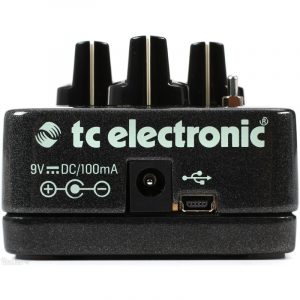

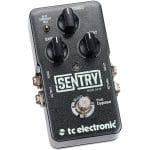
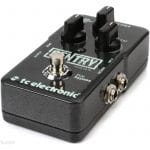
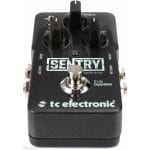


 Just like any piece of gear, the features on a noise gate pedal will vary from one to another. So, when you are shopping for a new pedal, there are some features that you should consider, including:
Just like any piece of gear, the features on a noise gate pedal will vary from one to another. So, when you are shopping for a new pedal, there are some features that you should consider, including: When you have an extensive setup, the space on your pedalboard can become tight, so you need to know that your noise gate pedal can slot into your set up without impacting your other effects. Many manufacturers appreciate this and design noise gate pedals with compact designs that can easily be accommodated on a pedalboard. It is worth looking at your current set up to check what space you have available and think about your future purchases so that you can keep your new pedal in your set up.
When you have an extensive setup, the space on your pedalboard can become tight, so you need to know that your noise gate pedal can slot into your set up without impacting your other effects. Many manufacturers appreciate this and design noise gate pedals with compact designs that can easily be accommodated on a pedalboard. It is worth looking at your current set up to check what space you have available and think about your future purchases so that you can keep your new pedal in your set up.




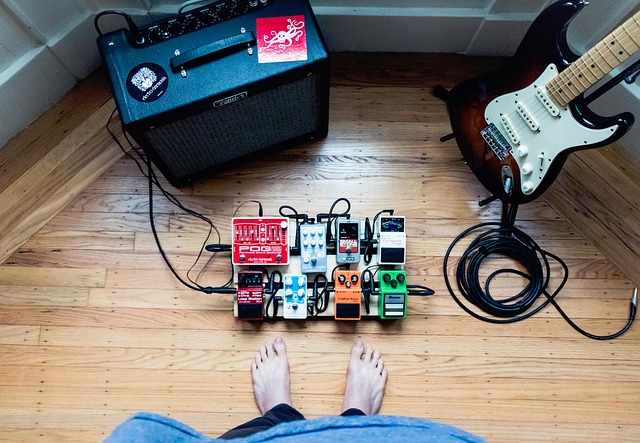
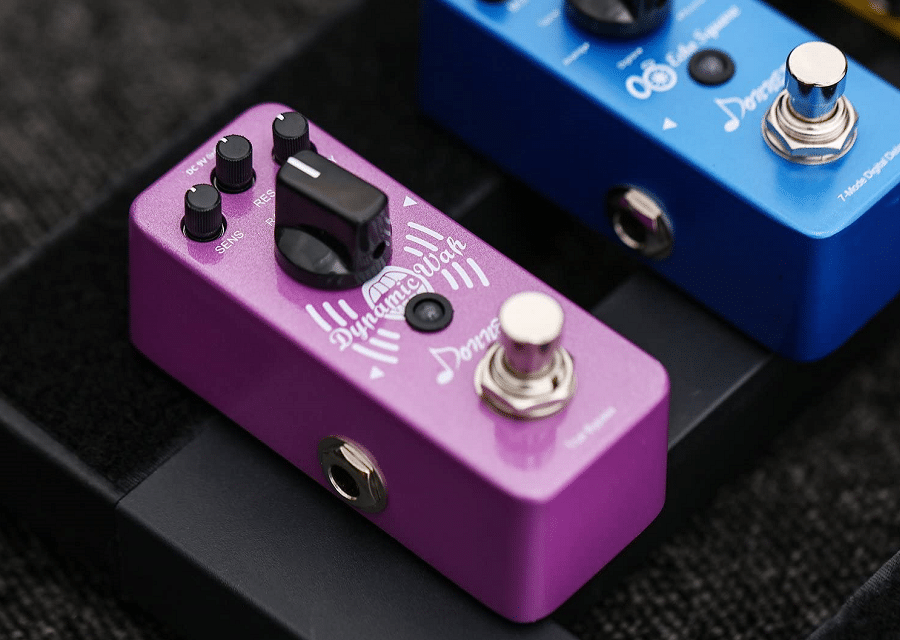




Just curious, how does the MXR Smart Gate not make the list? I know you mentioned that the BOSS pedal is the only pedal to have a mute option, but that’s simply not true. The MXR does not explicitly say “mute”, however when you engage the “full” noise reduction mode, especially along with the “high trigger range”, it does mute the signal. This is easily identifiable, as the light labeled “gate” will come on when it is “muted”. Don’t believe me?, well it’s one of the hallmark features pioneered by MXR in the “smart” gate. I understand personal preference, bias, and stigma associated with using the most popular pedal for noise control. However, its popularity is because it does work amazingly well. It is known for being extremely transparent, having an unusually fast attack, and quick release. I came across this article by chance, but it blew my mind that you made a top 5 list and simply ignored its existence. I’ve used so many different types over the years, but you’re doing a disservice to your readers by including your own bias in the article. If you like BOSS, that’s great, but they aren’t the best at everything. I’ve found that the BOSS noise suppressor is very good, and deserves a spot on the top shelf, but excluding the staple noise reduction pedal stands out to me.
Thank you for sharing your insights on the MXR Smart Gate and its noise reduction capabilities. We appreciate your detailed explanation of how the pedal functions and how it can effectively mute the signal when engaged in the “full” noise reduction mode. Your perspective on the features and performance of the MXR Smart Gate is valuable and will certainly be helpful for our readers who are considering noise reduction pedals.
While we do acknowledge the capabilities of the MXR Smart Gate and its reputation for transparency and quick response, the selection of pedals for our top 5 list was based on a combination of factors including popularity, versatility, and overall user feedback. We understand that personal preferences and biases can influence opinions, and we strive to provide a diverse range of options for our readers to explore.